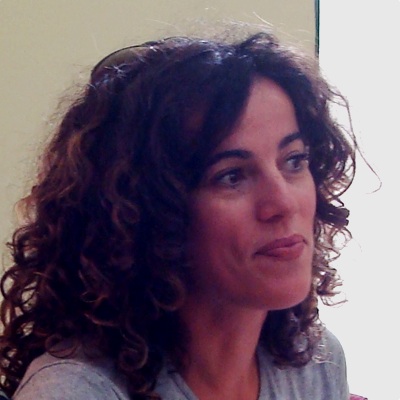Art in ELT & the Power of Thinking Routines
Chrysa Papalazarou

“Seeing comes before words. The child looks and recognizes before it can speak. But there is also another sense in which seeing comes before words. It is seeing which establishes our place in the surrounding world”
John Berger, Ways of Seeing, 1972
It is not unusual for us teachers and our learners to stick to routine classroom practice which is often structured around the need to perform well on tests and examinations. As a result, novelty, experimentation, fun, and creativity in the teaching/learning process may be restrained. Teaching and learning, however, are inherently creative activities. They call for all of us involved in the process to think in diverse ways, take risks, change present situations, and get better control over the meanings that shape our lives.
I am not an art expert but I like art and I believe in the powerful impact art can have upon learners’ thinking, learning and life attitudes. That was my starting point. In the last three years I have been using art in a more conscious and systematic way in my English class. I work a lot with paintings, photography and video. Within the context of an increasingly visual, contemporary culture, systematic contact with the expressive and communicative potential of visual language helps students become gradually proficient users of visual discourse. It enhances their ability to communicate ideas, meanings, information and feelings. Visual literacy enables the evaluative and selective use of the huge amount of visual information received daily and helps learners become themselves active readers of images.
There can be many ways to deal with visual arts. A framework that works efficiently in my teaching situation is the Making Thinking Visible Approach.
Visible Thinking is a flexible and systematic research-based framework stemming from Project Zero, an educational research group at the Harvard Graduate School of Education. Its original aim is to study and improve education in the arts, and has a double goal: a) to cultivate students’ thinking skills and dispositions and b) to deepen content learning. The basic idea is to make thinking visible within the context of learning, thus fostering cultures of thinking.
Post-it notes, sheets of construction papers on the walls, any sort of visible documentation within the classroom can be used for this aim where students’ individual and collective thinking is valued, revealed and promoted. By making thinking visible, students regulate, monitor, guide and reflect on their learning.
Thinking Routines are at the core of the Visible Thinking Programme.
- They are flexible, simple structures (i.e. a set of questions or a short sequence of steps that, when used systematically, promote the development of students’ thinking and the classroom culture).
- They target specific types of thinking, are easy to learn and teach, can be used across a variety of context and can be subject to group or individual work.
Here is an example of how these routines can be integrated in the English class and help learners develop their critical thinking and creativity alongside improving their English language skills.
While working on the theme of War/Peace, I showed my 6th grade primary school students (11 years old) Picasso’s Guernica.

I then asked them to: (Routine – Looking 10×2)
- Look at the painting for 30 seconds.
- Make a list of 10 words or phrases about what they see
- Share their words and phrases with the rest of the class
- Repeat the activity
I used a circle map to make their thinking visible (red marker was used for the 2nd phase of words and phrases they came up with when repeating the routine)

As homework I asked them to reflect on the session and write about it in their learning journals:


We then looked at the painting again, worked in groups, and elaborated more by using the See-Think-Wonder Routine:
- What do you see?
- What do you think about it?
- What does it make you wonder?
We used post-it notes to keep a visible record of students’ observations, interpretations and wonderings. It looked like this:





Using Picasso’s Guernica and these 2 routines at the beginning of the theme was effective in many ways:
- Children were fascinated by the process of observing-describing-interpreting
- They were able to approach and decode Guernica; a painting rich and complex in symbolism
- Their curiosity and expectations were aroused
- The ground was laid for dealing with the relevant historical context
- They developed their metaphoric thinking
- Motivation levels were high
In the final stage, after the children had being exposed to more visual stimuli (paintings/photographs/short film), they applied the Colour-Symbol-Image Routine. I asked them to work in pairs or in groups, and decide what they wished to represent: war or peace. They had to:
a) Select a colour/colours that they felt represented the ideas we discussed during the theme. They should also explain why they chose it.
b) Select a symbol. Explain why they chose it.
c) Choose an image. Explain why they chose it.
Colour-Symbol-Image is a thinking routine that asks students to distil the essence of ideas explored from reading, watching, listening or discussing in both non-verbal and verbal ways. It mostly has to do with personal or collective creative expression of what they consider insightful or important. Here is an example of how they crystallized the theme of war/peace through this routine.

In a fast changing world, the goals of education and the type of “minds” we wish to cultivate need to be frequently reevaluated. Though academic skills and achievement are prominent on the agenda, critical thinking, creativity, respectfulness, and ethical minds are also highly valued (Gardner, 2007). Using Art and Thinking routines in the ELT context can attend to more creative forms of learning and teaching.
Resources you might find useful:
Visible Thinking – Thinking Routines
Howard Gardner – Five Minds For the Future

